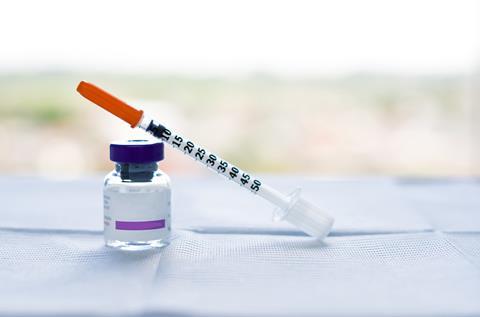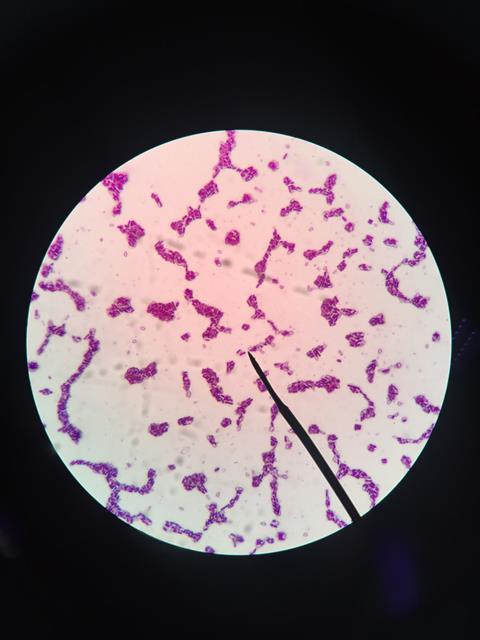Meera Senthilingam
This week, we explore our appearance, courtesy of a toxic bacterium. Explaining how is David Lindsay.
David Lindsay
You would think we would want to avoid the most toxic substance known to man, but what if I told you many people pay large amounts of money to have this substance deliberately injected into them? That’s what happens with botulinum toxin, better known as Botox.

Food poisoning is probably as old as mankind itself, and is caused by a variety of agents, including bacteria, viruses, parasites and toxins. One particularly unpleasant form of food poisoning comes from processed meat, and in particular sausages. Indeed, as far back as the 10th century, the Byzantium Emperor Leo VI banned blood sausages, a move which historians believe resulted from the fatal effects of an episode of sausage poisoning. However, systematic descriptions of the symptoms of this poisoning did not appear until the beginning of the nineteenth century, when a German doctor named Justinus Kerner described the effects of what he called botulism, from the Latin word for sausage, botulus. The bacterium responsible for botulism was discovered at the end of the nineteenth century by Emile Pierre van Ermengem, a bacteriologist at the University of Ghent in Belgium. Van Ermengem’s discovery was made following an outbreak of botulism from some smoked ham in a Belgian village in 1895, and the pathogen responsible was named clostridium botulinum. The bacteria were subsequently found to exist as several different types, depending on the source.
The symptoms of botulism are not caused by the presence of the bacteria, but by a certain toxin they excrete, which was first isolated in the early twentieth century. All the various strains of botulinum toxin are large peptides, of molecular weight around 150 thousand Daltons. The toxin is actually composed of two peptides, a heavy chain of 100 kDaltons, and a light chain of 50 kDaltons, joined together by a disulfide bridge. The heavy chain recognises and binds to the cell surfaces of nerve fibres, where it can be absorbed into the cell. That’s when the light chain gets to work. It’s an enzyme called a protease, which means it chops up specific types of protein. In this case, the botulinum toxin breaks down the proteins which release neurotransmitters such as acetylcholine, which in turn causes muscle contraction. The end result is what’s known as flaccid paralysis, where the muscle is unable to contract. Most deaths from botulism poisoning are a result of the toxin reaching the respiratory system, causing respiratory failure and eventual fatality.

The lethal dose of the toxin for the average person is only thirty nanograms, or three hundredths of a millionth of a gram. Spread evenly, around fifty grams of the toxin is all that would be required to kill everyone on the planet.
Fortunately, death by botulism poisoning is not a particularly rapid process, and so victims can be treated if the symptoms are detected in time. The tell-tale loosening of muscles initially produces double vision, loss of facial expression and difficult with swallowing and talking. The paralysis then spreads to the arms and legs, and eventually the rest of the body.
It’s not just sausage eaters that are at risk of botulism. A range of packaged and processed foods can become infected, and infant botulism is particularly dangerous, given that babies are unable to communicate their symptoms verbally. Honey is one of the biggest sources of infant botulism, and this is why it’s often recommended that children under 12 months avoid it. Botulism can also be contracted through abscessed wounds, and so it is one of the many risks intravenous drug users face. The toxin can also be found in soil, and in dust, so floors, carpets and work surfaces present another infection risk.
So, botulinum toxin sounds like something we ought to avoid. However, with very careful control of the dose, the toxin’s effect on our nerves can be put to therapeutic use. Indeed, the toxin has been approved for the treatment of a wide range of medical conditions, including eye spasms and squints, facial spasms, excessive sweating, motor neurone syndromes and even migraine. But most people will know botulinum toxin best under the trade name of Botox, and it’s most familiar to us because of its cosmetic use. In the late 1980s and early 90s, it was found that botulinum toxin was effective in treating facial wrinkles, and this has developed into an incredibly lucrative cosmetic treatment market. The Botox is injected directly into the face, and reduces wrinkles for a period of several weeks to months. Although its use is strictly controlled, there have been reports of fatalities and sever side-effects from some uses of Botox. Personally, I think I’ll just live with my wrinkles, but I’m not giving up sausages.
Meera Senthilingam
Fair enough David. Glasgow University’s David Lindsay there, with the toxic yet cosmetic chemistry of botulinum toxin. Next week, smile for the camera! Or maybe not…
Brian Clegg
Once upon a time, the film for photography was a dangerous medium. The base material that carried the images, the actual ‘film’ itself, was celluloid, based on cellulose nitrate or nitrocellulose, also known as guncotton. This is a dramatically flammable material that can spontaneously combust if stored under the wrong conditions – hardly the right thing to put through a hot movie projector. The saviour of the movie industry was another early natural plastic, cellulose acetate.
Meera Senthilingam
And discover how this compound saved the day by joining Brian Clegg in next week’s Chemistry in its Element. Until then, thanks for listening, I’m Meera Senthilingam.













No comments yet